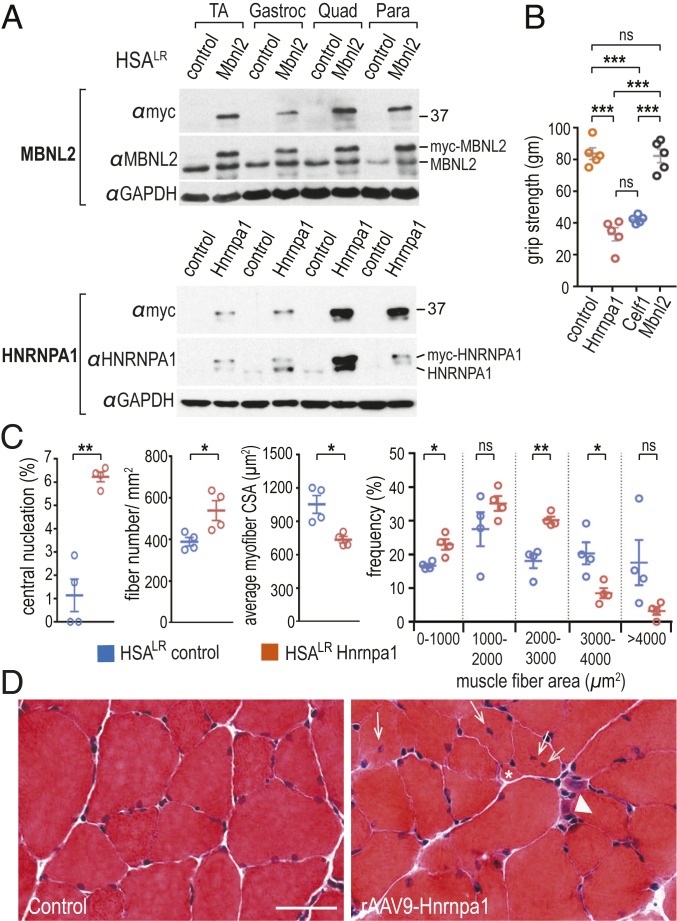Fig. 1.
AAV9-mediated systemic overexpression of HNRNPA1 in a mouse model of DM1 leads to disease-associated pathology. (A) HSALR P0-P2 mice (n = 4 each) were injected (i.v.) with PBS (control), AAV9/Mbnl2 (Mbnl2), or AAV9/HnrnpA1 (Hnrnpa1) and protein levels were assessed by immunoblotting using antibodies against both endogenous (MBNL2, HNRNPA1) and exogenous (myc-MBNL2, myc-HNRNPA1) proteins in tibialis anterior (TA), gastrocnemius (Gastroc), quadriceps (Quad) and paraspinal (Para) muscles. GAPDH served as the loading control. (B) AAV9-mediated overexpression of either CELF1 (AAV9-Celf1, n = 5) or HNRNPA1 (AAV9-Hnrnpa1 n = 5) led to reductions in grip strength compared with PBS (n = 5), GFP (AAV9-GFP, n = 5), or Mbnl2-injected (AAV9-Mbnl2, n = 5) mice. (C) Statistical analysis and (D) representative muscle cross-sections indicated an earlier onset of DM1-relevant myopathic changes including centralized myonuclei (white arrows), atrophic (white arrowhead) myofibers, and split (asterisk) fibers in HNRNPA1 (rAAV9-Hnrnpa1) overexpression quadriceps. P values were calculated using a one-way ANOVA with Tukey’s HSD post hoc test or an unpaired two-tailed Student’s t test. Data are SEM and significant. *P < 0.05; **P < 0.01; ***P < 0.001; ns, not significant. (Scale bar, 50 µm.)

